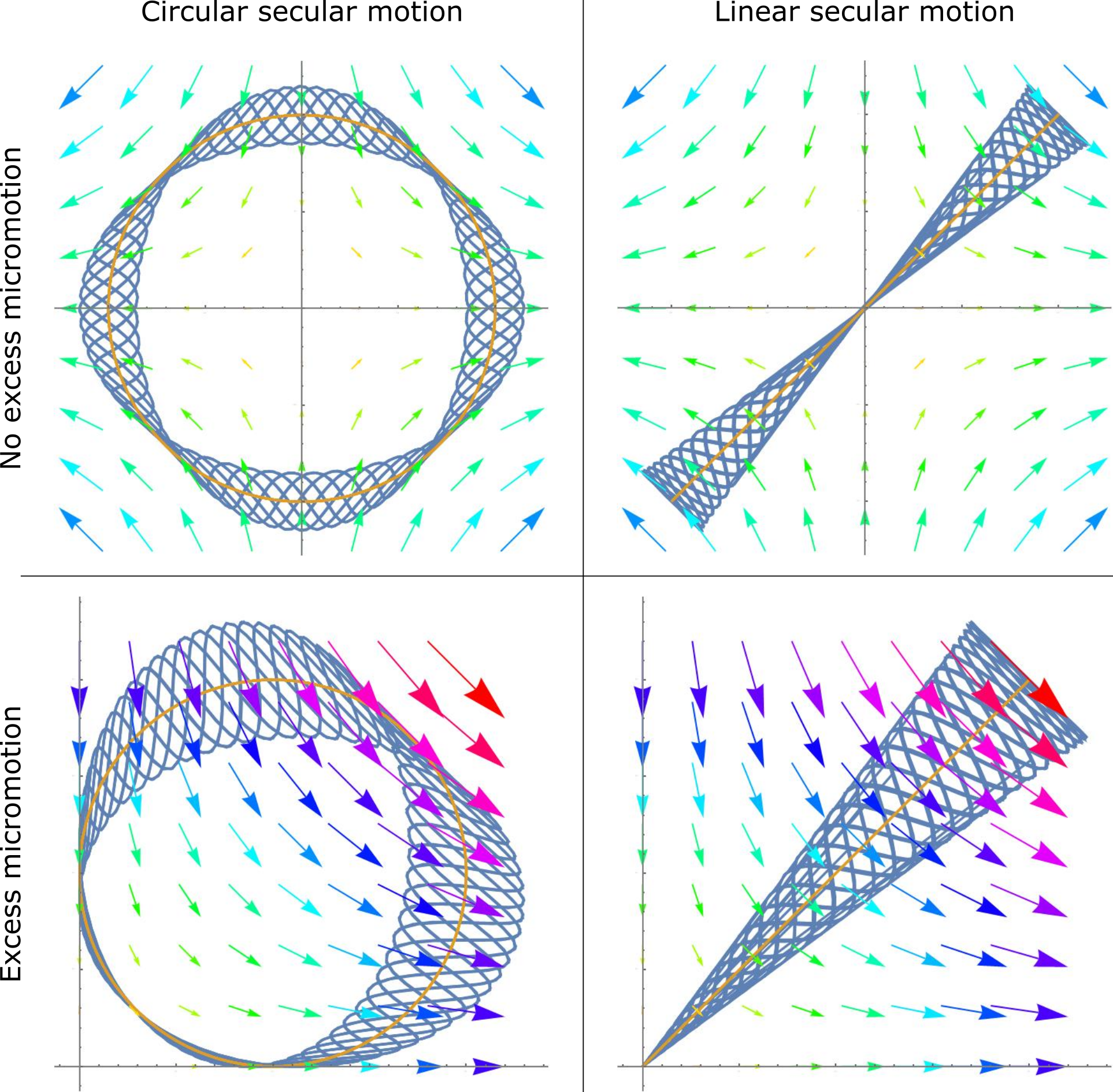ponderomotive force on:
[Wikipedia]
[Google]
[Amazon]
 In
In
 In
In physics
Physics is the natural science that studies matter, its fundamental constituents, its motion and behavior through space and time, and the related entities of energy and force. "Physical science is that department of knowledge which r ...
, a ponderomotive force is a nonlinear
In mathematics and science, a nonlinear system is a system in which the change of the output is not proportional to the change of the input. Nonlinear problems are of interest to engineers, biologists, physicists, mathematicians, and many other ...
force
In physics, a force is an influence that can change the motion of an object. A force can cause an object with mass to change its velocity (e.g. moving from a state of rest), i.e., to accelerate. Force can also be described intuitively as a p ...
that a charged particle experiences in an inhomogeneous oscillating electromagnetic field
An electromagnetic field (also EM field or EMF) is a classical (i.e. non-quantum) field produced by (stationary or moving) electric charges. It is the field described by classical electrodynamics (a classical field theory) and is the classical c ...
. It causes the particle to move towards the area of the weaker field strength, rather than oscillating around an initial point as happens in a homogeneous field. This occurs because the particle sees a greater magnitude of force during the half of the oscillation period while it is in the area with the stronger field. The net force during its period in the weaker area in the second half of the oscillation does not offset the net force of the first half, and so over a complete cycle this makes the particle move towards the area of lesser force.
The ponderomotive force Fp is expressed by
:
which has units of newtons (in SI units) and where ''e'' is the electrical charge
Electricity is the set of physical phenomena associated with the presence and motion of matter that has a property of electric charge. Electricity is related to magnetism, both being part of the phenomenon of electromagnetism, as described by ...
of the particle, ''m'' is its mass, ''ω'' is the angular frequency
In physics, angular frequency "''ω''" (also referred to by the terms angular speed, circular frequency, orbital frequency, radian frequency, and pulsatance) is a scalar measure of rotation rate. It refers to the angular displacement per unit tim ...
of oscillation of the field, and ''E'' is the amplitude
The amplitude of a periodic variable is a measure of its change in a single period (such as time or spatial period). The amplitude of a non-periodic signal is its magnitude compared with a reference value. There are various definitions of amplit ...
of the electric field. At low enough amplitudes the magnetic field exerts very little force.
This equation means that a charged particle in an inhomogeneous oscillating field not only oscillates at the frequency of ''ω'' of the field, but is also accelerated by Fp toward the weak field direction. This is a rare case where the sign of the charge on the particle does not change the direction of the force ((-e)2=(+e)2).
Derivation
The derivation of the ponderomotive force expression proceeds as follows. Consider a particle under the action of a non-uniform electric field oscillating at frequency in the x-direction. The equation of motion is given by: : neglecting the effect of the associated oscillating magnetic field. If the length scale of variation of is large enough, then the particle trajectory can be divided into a slow time motion and a fast time motion: : where is the slow drift motion and represents fast oscillations. Now, let us also assume that . Under this assumption, we can use Taylor expansion on the force equation about , to get: : :, and because is small, , so : On the time scale on which oscillates, is essentially a constant. Thus, the above can be integrated to get: : Substituting this in the force equation and averaging over the timescale, we get, : : Thus, we have obtained an expression for the drift motion of a charged particle under the effect of a non-uniform oscillating field.Time averaged density
Instead of a single charged particle, there could be a gas of charged particles confined by the action of such a force. Such a gas of charged particles is calledplasma
Plasma or plasm may refer to:
Science
* Plasma (physics), one of the four fundamental states of matter
* Plasma (mineral), a green translucent silica mineral
* Quark–gluon plasma, a state of matter in quantum chromodynamics
Biology
* Blood pla ...
. The distribution function and density of the plasma will fluctuate at the applied oscillating frequency and to obtain an exact solution, we need to solve the Vlasov Equation The Vlasov equation is a differential equation describing time evolution of the Distribution function (physics), distribution function of plasma (physics), plasma consisting of charged particles with long-range interaction, e.g. Coulomb's law, Coulo ...
. But, it is usually assumed that the time averaged density of the plasma
Plasma or plasm may refer to:
Science
* Plasma (physics), one of the four fundamental states of matter
* Plasma (mineral), a green translucent silica mineral
* Quark–gluon plasma, a state of matter in quantum chromodynamics
Biology
* Blood pla ...
can be directly obtained from the expression for the force expression for the drift motion of individual charged particles:
: